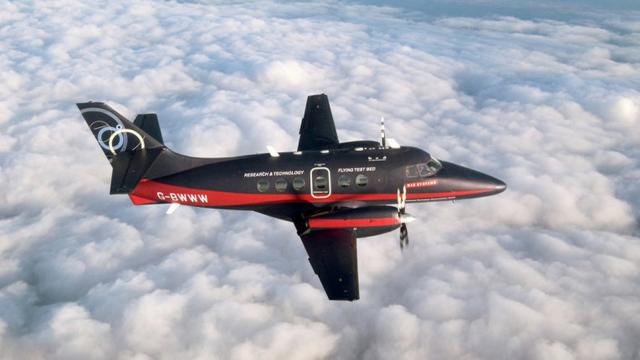Being a commercial airline pilot isn’t as glamorous as Leonardo di Caprio would have you believe; in practice, it’s more akin to long haul trucking than aerial acrobatics. So rather than force a human pilot to endure the monotony of maintaining course, a European research consortium wants to replace them entirely — with software.
The idea of an autonomous airliner isn’t that much of a stretch, really. The US military already employs autonomous UAVs that can fly themselves (and now land as well), the technology simply needs to be adapted to existing civilian air traffic control schemes. To that end, ASTREA, a £62 million public-private research consortium between the UK and seven major contractors — AOS, BAE Systems, Cassidian, Cobham, Qinetiq, Rolls-Royce and Thales UK — launched a remotely-operated Jetliner from Warton, Lancashire last month and flew it to Inverness, Scotland.
Well, technically, an o-nboard human handled the takeoff and landing bits (and acted as a backup should the system fail) but the flight computer was at the helm for a vast majority of the 800km trip. A second pilot monitored the plane’s performance from the ground and remotely issued commands to the flight computer, though the autonomous systems did most of the work.
While this is a major milestone for civilian UAS technology, it’s still just a glorified auto-pilot. Numerous systems require further development, such as the obstacle avoidance routine. Autonomous aircraft need to be able to differentiate between, say, thunderheads and 747s, at least as well as their meat-sack counterparts.
“Because we were in shared airspace, all the sense-and-avoid maneuvers we tested used synthetic targets [fake obstacles injected into the flight control system]. Any changes to the flight route were communicated to the ground-based pilot by air traffic control, with the pilot then instructing the aircraft to amend its course accordingly,” Lambert Dopping-Hepenstal at BAE Systems, ASTRAEA’s program director, said in a press release.
The test concluded successfully — in that the flaming wreckage of a private jet didn’t fall from the sky after mistaking a hot air balloon for a cirrus cloud — and paved the way for further development and testing. ASTREA has already announced a second round of flights beginning in June, grading an IR obstacle avoidance system that activates during emergency landings as well as a air traffic control communications module and the next iteration of the sense-and-avoid system.
[PopSci — New Scientist — The Engineer — BBC — Image:: ASTREA]
